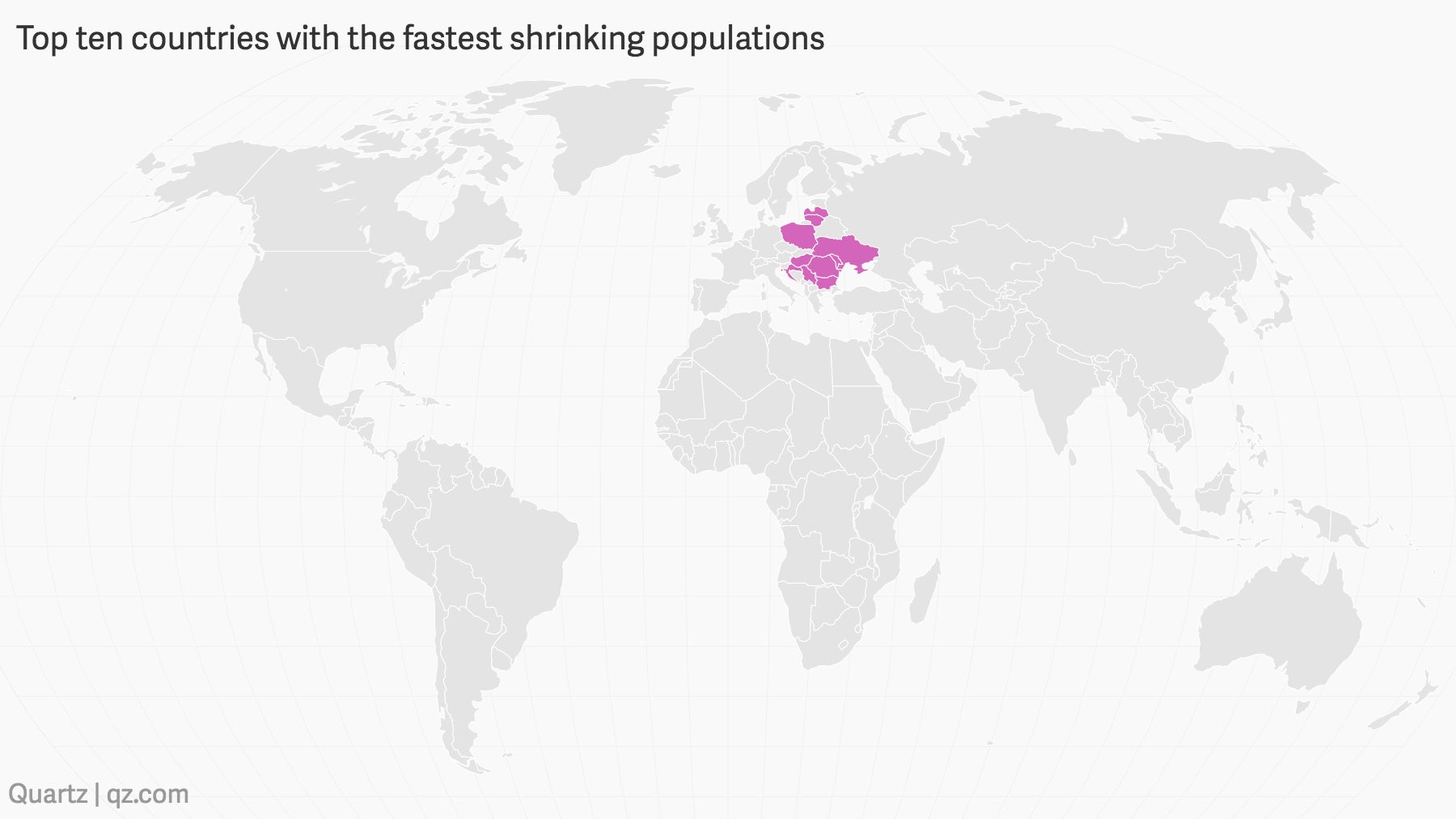The fastest shrinking countries on earth are in Eastern Europe
Eastern Europe is projected to shrink dramatically over the next few decades. What’s worse, most countries are refusing to consider one solution to slow down the incoming demographic disaster.


Eastern Europe is projected to shrink dramatically over the next few decades. What’s worse, most countries are refusing to consider one solution to slow down the incoming demographic disaster.
The top 10 countries with the fastest shrinking populations are all in Eastern Europe (with a few in Central and Northern Europe), according to UN projections. Bulgaria, Latvia, Moldova, Ukraine, Croatia, Lithuania, Romania, Serbia, Poland, Hungary, are estimated to see their population shrink by 15% or more by 2050.
In Bulgaria, the world’s fastest shrinking country, the population is expected to drop from 7 million in 2017 to 5.4 million in 2050. In Latvia, the population is estimated to drop from 1.9 million in 2017 to 1.5 million, whilst in Moldova, the population is estimated to shrink from 4 million to 3.2 million.
“Many post-communist countries of Central and Eastern Europe are heading for a major demographic decline,” says Tomas Sobotka, a lead researcher at Wittgenstein Centre, which analysis population dynamics. “And, what’s more, many have already experienced massive population declines in the last 25 years,” he adds.
At least 11 countries have shrunk by more than 10% in terms of their population size since 1989, Sobotka says, including, Bulgaria, Romania, Ukraine. Latvia lost over a quarter of its population (27%), Lithuania 23%, Bulgaria and Bosnia and Herzegovina 21%. For instance, Bulgarian population contracted from 9 million in 1989 to 7.1 million in 2017. “That’s a massive population loss, unprecedented in peace times,” he explains.

Sobotka puts this population loss down to three factors—falling fertility rates, massive out-migration and relatively high mortality. “So whereas Western and southern European countries have attracted a lot of immigration which largely offset the effects of low fertility, the East is in a double bind, experiencing both out-migration and low birth rates,” he says.
In 2016, growth in Europe’s population was largely as a result of immigration (paywall). While the number of births and deaths were equal at 5.1 million each, net migration boosted the population by 1.5 million to 511.8 million. Taking in more migrants might seem like an obvious solution to Eastern Europe demographic time bomb, but the issue remains politically toxic.
In fact, the fiercest resistance to taking in migrants has come from countries with rapidly depleting populations. In 2015, the European Union (EU) was rocked by a refugee crisis that saw over a million migrants flow into the bloc. The countries that are the main sea gateways to Europe—Greece and Italy—bore the brunt of the crisis. The EU’s attempt to fairly resettle migrants across the bloc has failed; in 2015, the EU pledged to resettle 160,000 migrants, but as of August 2017, only 25,000 were actually moved. Slovakia had taken in just 16 migrants, the Czech Republic 12, while Hungary and Poland have refused to take any along. Slovakia and the Czech Republic have also been reluctant to accept migrants from the relocation scheme. Earlier this month (Jan.3), political leaders from Hungary and Poland declared that the EU’s migration policy has failed.
While migration will help ease the upcoming demographic decline, it’s unlikely to reverse the trend. While the refugee crisis saw Germany’s population grow, researchers note that not even a million migrants will reverse Germany’s looming demographic decline.